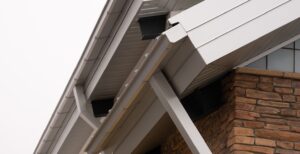Installing Asphalt Shingles Over Existing Roofs: Is It a Good Idea?
When your roof begins to show signs of wear, replacing it can seem daunting. One option homeowners often consider is installing new asphalt shingles over the existing ones, known as a “roof-over.” While this approach can be cost-effective and less labor-intensive, it’s essential to weigh the pros and cons before making a decision.

Benefits of Installing Asphalt Shingles Over Existing Roofs
Cost Savings
Removing old shingles can be labor-intensive and costly. By overlaying new shingles, you can save on disposal fees and labor costs associated with tear-off.
Quicker Installation
Without the need to remove the old roofing material, the installation process is faster, allowing you to have a new roof in place more quickly.
Reduced Environmental Impact
By reusing the existing shingles, you contribute less to landfills, promoting a more sustainable roofing solution.
Drawbacks and Considerations
Potential Code Violations
Many local building codes limit the number of shingle layers allowed. Installing a new layer over an existing one may violate these codes, leading to potential fines or issues when selling your home.
Hidden Damage
Overlaying shingles can conceal underlying issues like rot or structural damage. Without addressing these problems, the new roof may not perform optimally.
Shortened Roof Lifespan
The added weight from an additional layer of shingles can strain the roof structure, potentially leading to premature failure.
Warranty Concerns
Some manufacturers’ warranties may be voided if shingles are installed over existing layers, leaving you unprotected if issues arise.
When Is It Appropriate to Overlay Shingles?
Overlaying shingles might be suitable if:
- The existing roof has only one layer of shingles.
- The roof deck is in good condition without signs of damage.
- Local building codes permit additional layers.
- The new shingles are compatible with the existing ones.
Proper Installation Practices
If you decide to proceed with a roof-over, ensure the following steps are taken:
- 0o
 Inspect the Existing Roof: Check for any damage or areas of weakness.
Inspect the Existing Roof: Check for any damage or areas of weakness. - Replace Damaged Decking: Any compromised wood should be replaced to maintain structural integrity.
- Install a Quality Underlayment: A waterproof underlayment can provide an additional layer of protection.
- Use Compatible Shingles: Ensure the new shingles are suitable for overlay installation.
- Adhere to Local Codes: Always follow local building codes and regulations.
While installing asphalt shingles over an existing roof can offer short-term benefits like cost savings and quicker installation, it’s crucial to consider the long-term implications. Always consult with a professional roofer to assess the condition of your existing roof and determine the best course of action. Remember, a well-installed roof is an investment in your home’s longevity and safety.

 Effective communication is key to a successful roofing project. Choose a contractor who is responsive, listens to your concerns, and provides clear explanations. Establish a timeline for the project and ensure that the contractor adheres to it. Regular updates and transparency throughout the process can prevent misunderstandings.
Effective communication is key to a successful roofing project. Choose a contractor who is responsive, listens to your concerns, and provides clear explanations. Establish a timeline for the project and ensure that the contractor adheres to it. Regular updates and transparency throughout the process can prevent misunderstandings. Seamless gutters are custom-made on-site to fit your home’s exact measurements, eliminating the need for seams or joints. This continuous design reduces the likelihood of leaks and sagging, common issues with sectional gutters. Made from high-quality materials such as aluminum, copper, or steel, seamless gutters are built to withstand harsh weather conditions, including heavy rainfall, snow, and high winds. Their robust construction ensures they can handle the elements without compromising performance .
Seamless gutters are custom-made on-site to fit your home’s exact measurements, eliminating the need for seams or joints. This continuous design reduces the likelihood of leaks and sagging, common issues with sectional gutters. Made from high-quality materials such as aluminum, copper, or steel, seamless gutters are built to withstand harsh weather conditions, including heavy rainfall, snow, and high winds. Their robust construction ensures they can handle the elements without compromising performance . Each seamless
Each seamless